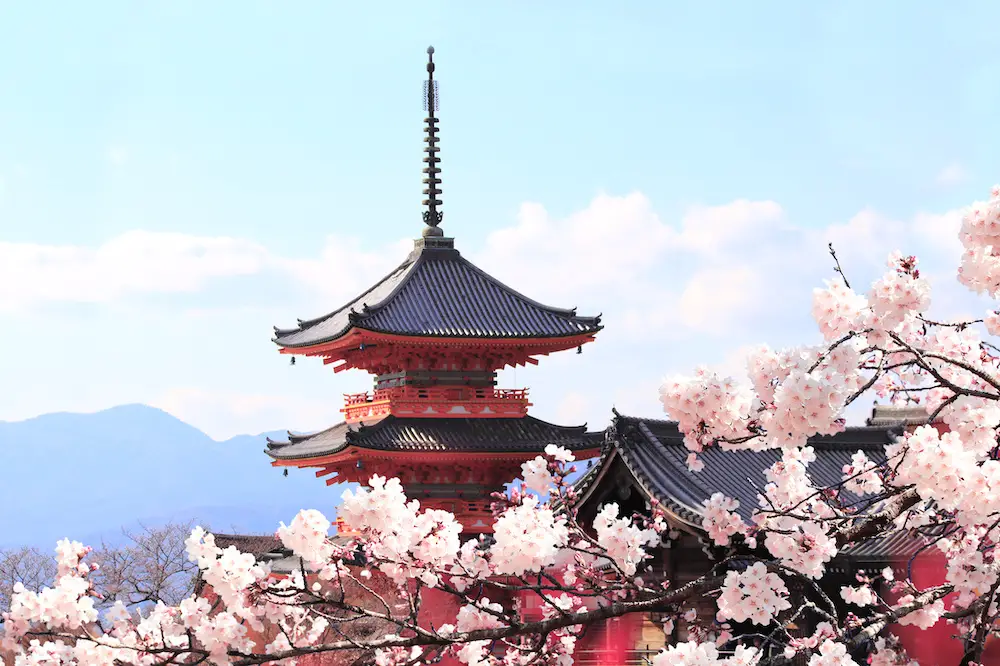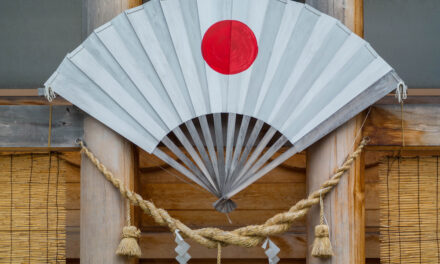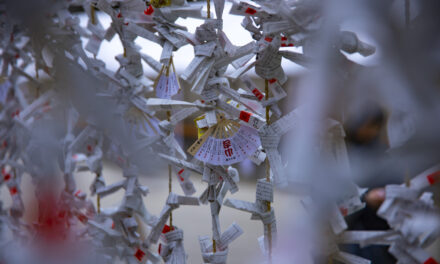Shintoism is one of the most ancient and prevalent religions in Japan, deep-rooted way back in the 6th century CE.
The term refers to “the indigenous Japanese religion” centered around worshipping spirits, which its followers call kami.
Want to know an interesting fact about Shintoism? It was the state religion of Japan until 1945.
But what makes this particular set of beliefs and practices so strong that it is still followed even today?
Moreover, why do we still see symbol of Shintoism all over Japan, and what do they even mean?
Contents
What Is Shintoism?
To understand the symbols, you first need to know the basics of Shintoism.
Shintoism was introduced in Japan in 660 BC at the time of Buddhism.
Although it is hard to define Shinto precisely, it will be enough to know for now that it is based on the polytheistic worship of different gods.
The literal meaning of Shinto is “the way of kami.” The term is also popular as kami-no-michi among the people.
Besides being a polytheistic religion, Shintoism also falls in animistic beliefs or those that worship nature or spirits.
For Shinto believers, gods or kami reside everywhere in nature—be it the mountains, waterfalls, deserts, and even trees.
Shinto has unbelievably kept its influence on Japan, despite having no founder, no doctrine, and even no Holy Writ.
Common Shinto Beliefs and Practices
It must be hard for some to figure out how Shinto works without any doctrine.
Well, in reality, it relies more on ritual behavior rather than any dogma.
That’s why you can’t differentiate Shinto practices from the traditional Japanese rituals, as both happen to be quite alike.
Here are some commonly observed Shinto beliefs and practices:
Shrine Visits
Shinto practitioners worship kami in public places, which they call “shrines” in English and jinja in Japanese.
Even today, the Japanese people visit shrines every morning religiously before heading to work.
Some also visit them occasionally as a part of their pilgrimage.
The term used for these visits is sankei, while the individual visit or worship is known as hairei.
For your information, approximately 10,000 public shrines are operating in Japan at the moment.
Notably, around 80,000 of them are associated with the Association of Shinto Shrines, while the remaining 20,000 stay unassociated.
Spirit Mediums
Kami-gakari is a widespread practice among the majority of Shinto practitioners.
They believe that through this practice, the kami can communicate with them after possessing a human being.
In the Tohoku region of Northern Japan, two Shinto blind ladies, named Itako and Ichiko, were trained from childhood to be spiritual mediums.
Shinto practitioners see them as holy personalities possessing supernatural powers.
Anyway, the process of mediumship begins when kami possesses a young woman and marries her.
After this, the kami serves as that woman’s protective spirit, giving her the power to call upon other spirits.
This way, she serves as a spirit medium and conveys people’s messages to the dead.
If that is something you are interested in, you can also be a spirit medium.
Afterlife
Books like Kojiki and Nihongi confirm that Shinto cosmology has several realms in it.
These realms represent multiple parts of the universe, each having its own species.
The book also reveals that Shinto practitioners focus more on this life rather than any afterlife.
Moreover, they believe the spirits residing in the mountains descend to the world to be a part of agricultural festivals.
Not just that, but Shinto priests also preach that the dead don’t leave the world entirely.
They continue to inhabit the world to make it a better place for their offspring.
Has this made you recall your dream about meeting a dead spirit? Well, it may be some sort of a sign.

Symbol of Shintoism
Now that you know what makes Shintoism so different from other religions, let’s learn about some prominent symbols of Shintoism.
Here are the four most notable Shinto symbols:
Torii Gate, The Traditional Shintoism Symbol
The widely-known symbols of Shintoism are the massive gates present at the entrance or inside shrines.
Shinto followers call these wooden or stone-made gates torii.
Not only do they symbolize the transformation of a person from temporal to sacred, but they also represent the home of kami.
You may have usually seen torii painted in vibrant colors like red or orange. Well, there is a reason behind it.
Interestingly, the Japanese consider these colors the symbols of the sun and life, which can ward off dark spirits.
Therefore, it is a common belief that once a visitor passes through these gates, he gets rid of all the evil energy.
However, not all Torii are red. Some are in white, grey, and even black.
In case you don’t know, thousands of tourists visit Japan every year just to see the aesthetic torii spots.
The most popular ones are:
- Yasukuni Shrine
- Fushimi Inari Shrine
- Mitsumine Shrine
- Oarai-Isosaki Shrine
- Itsukushima Shrine
Shimenawa, The Shinto’s Rope of Spirituality
Almost every shrine in Japan has many white zig-zag ornaments or shide hanging from ropes called shimenawa.
These ropes come in various sizes and diameters. Some are thick, while others are delicately made of just a few threads.
Both shimenawa and shide symbolize a sacred place and ward off evil and dark spirits.
Coming back to shimenawa, many Shinto practitioners hang them from torii, and some even wrap them around sacred rocks.
If you have seen ropes with white zig-zag papers fastened around the waists of sumo wrestlers, those are shimenawa.
Also, these ropes tell the world that this person or this thing has a god living within itself.
Sakaki, The Shinto’s Holy Tree
Trees have a special place in Shintoism, as the religion revolves around worshipping nature.
Aside from sakaki, a few different trees are also considered holy. The Japanese people call them shinboku.
These trees serve as a sacred boundary around the shrine, symbolizing that the surrounded place is holy and purified.
However, sakaki trees possess a greater significance than the others.
They are evergreen flowering trees in Japan, which show the immortality of kami.
In fact, people offer the sakaki branch to the gods.
Have you heard of a Japanese tale of the sun goddess named Amaterasu?
It talks about how a decorated sakaki tree was used to lure Amaterasu to a cave from her hiding place.
That supports why sakaki trees are still celebrated and seen as a symbol of Shintoism.
Tomoe, The Samurai Commas
Tomoe is a swirling symbol that resembles the famous yin-yang symbol of China.
However, the stories behind them both are entirely different.
The Japanese use this comma-shaped symbol in their authority badges, as well.
Usually, Tomoe has two to four commas in its design, but the tomoe with three commas is more common than the others.
Shinto practitioners call it mitsu-domoe, but what do these commas say?
They actually represent the interaction of earth, heaven, and the underworld—the three existing realms.
You may also see tomoe as decorating ornaments in many houses in Japan.
Final Thoughts
Shintoism has a lot more than what we have just covered here.
From the meaningful symbols to the strong roots, “the way of the gods” speaks a lot about the rich Japanese history and culture.
The little details hidden behind the iconic symbols of Shintoism are pretty interesting to learn about, as well.
They tell such fascinating and unheard-of stories about the Japanese culture that no history lover can ever get tired of hearing.
Are you feeling a part of this crowd already? Well, welcome to the club!



